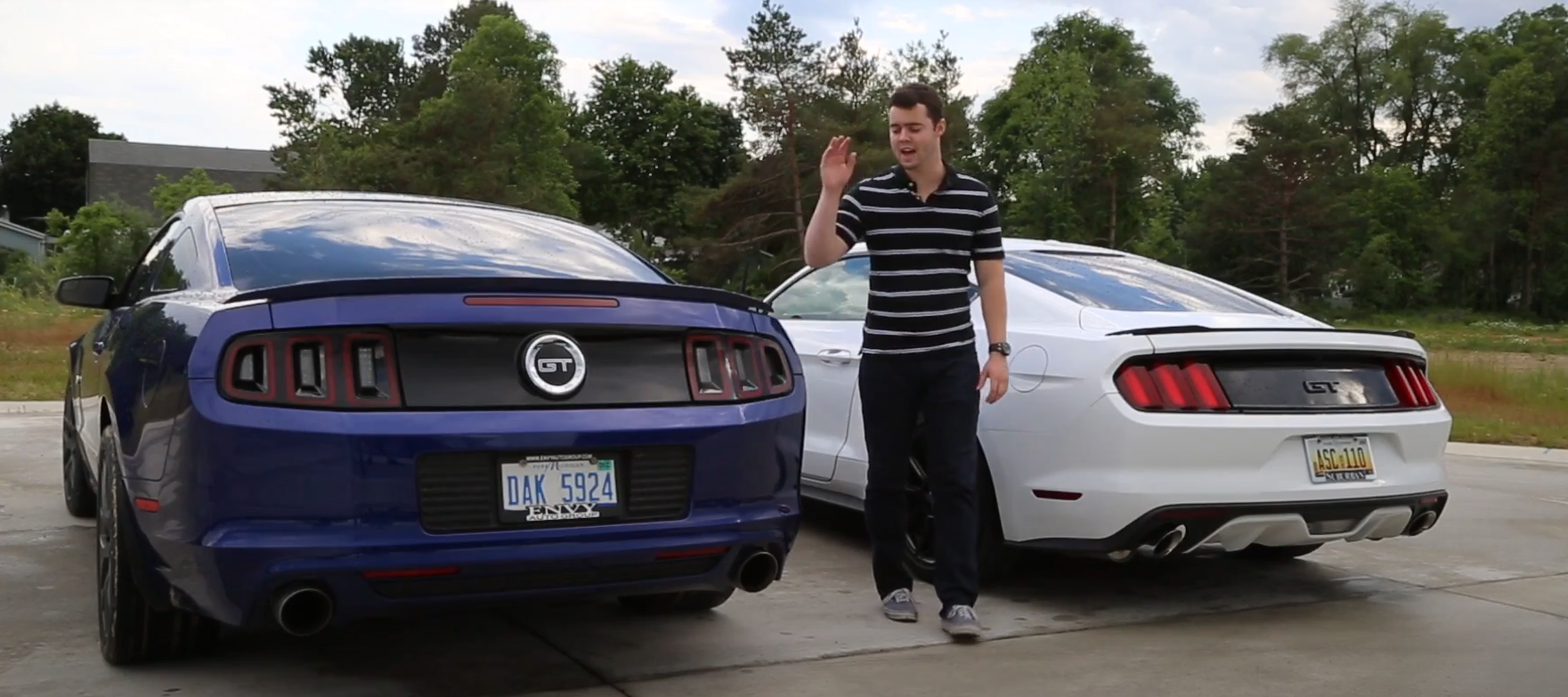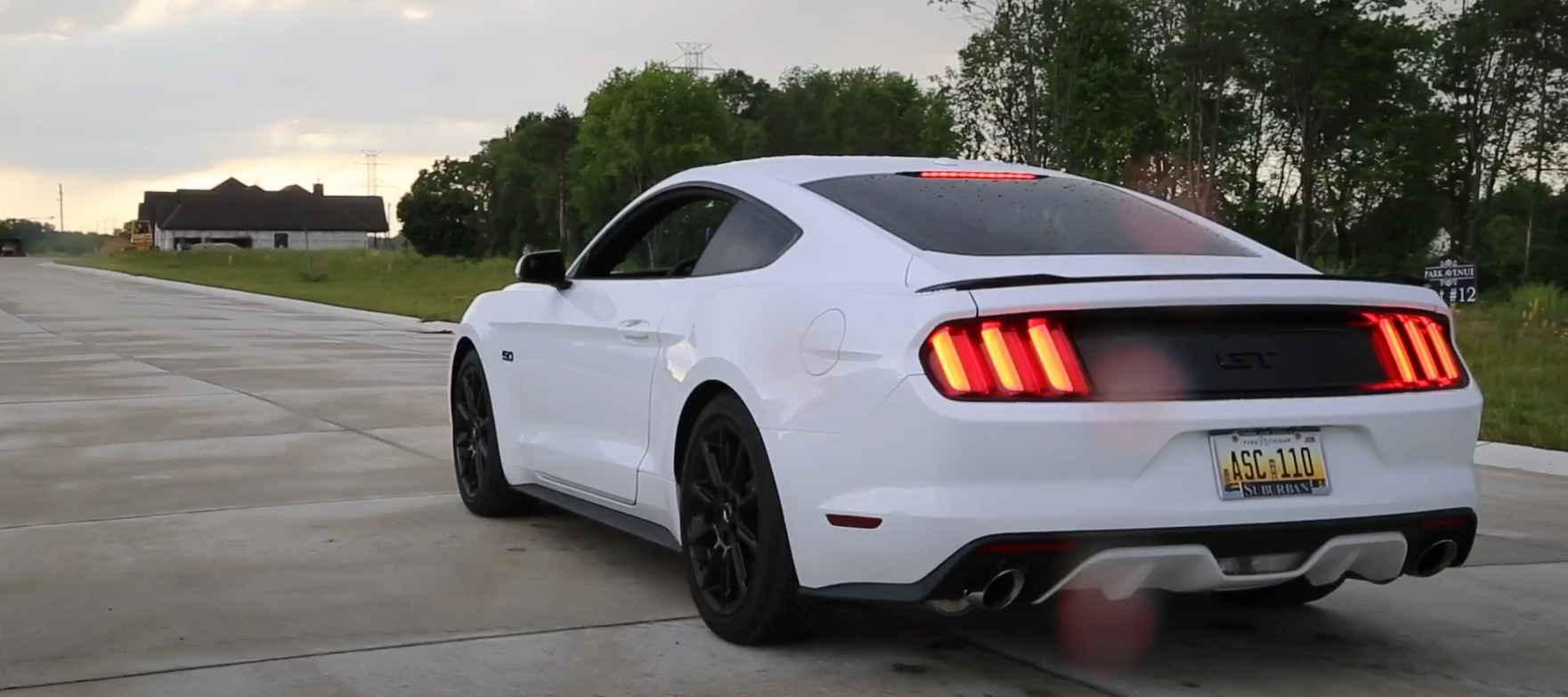The 2016 Mustang brings some big changes, especially when it comes to how it drives and feels inside. One major update is the shift from a solid rear axle to independent rear suspension, making the car more stable and comfortable on the road. The new model also adds a better interior with upgraded materials and a fresh look, along with improvements to the engine and performance features.
Compared to older versions, the latest Mustang is much more enjoyable both on daily drives and at the track. Drivers will notice a quieter factory exhaust, but many choose aftermarket options for a true muscle car sound. With new technology, different driving modes, and better handling, this Mustang balances speed, style, and comfort in a way that stands out from past generations.
Key Takeaways
- The Mustang now uses independent rear suspension for better handling.
- Interior and performance features have seen major upgrades.
- The latest model offers a more balanced driving experience than before.
Comparing Independent Rear Suspension with Solid Rear Axle
Effect on Cornering and Ride Feel
With a solid rear axle, both wheels are connected. When one wheel hits a pothole, the other wheel feels it too. This can make the car lose grip in a turn, especially on rough roads. Handling can feel unpredictable, and the ride may be bumpy.
An independent rear suspension allows each wheel to move by itself. This gives smoother rides and helps the car hold the road better during corners. The car feels more stable and inspires more confidence when driving through turns, making it more enjoyable for spirited driving.
Pros and Cons of Each Setup
Solid Rear Axle
| Pros | Cons |
|---|---|
| Lower cost | Less grip in corners |
| Can handle high power | Rougher ride |
| Cheaper to repair | Both wheels affected by bumps |
Independent Rear Suspension
| Pros | Cons |
|---|---|
| Better handling | More expensive to make and fix |
| Smoother ride | Can add some weight to the car |
| Improved cornering confidence |
Solid rear axles are tough and affordable, making them good for straight-line speed and drag racing. Independent rear suspension gives a big upgrade in comfort and handling, especially during everyday driving and track use. Choosing between them depends on what the driver wants from their car.
S550 Mustang Chassis Improvements
Comfort and Handling Upgrades
The S550 Mustang uses independent rear suspension instead of the solid rear axle from past models. With this setup, each rear wheel can react to bumps and road changes by itself. This reduces how much the car moves around over rough pavement.
Benefits of the independent rear suspension:
- The car feels more stable when cornering.
- Drivers get more confidence in sharp turns.
- Handling is smoother, even when hitting potholes or bumps.
A summary table shows the key differences:
| Feature | Old Mustang (Solid Axle) | S550 Mustang (Independent) |
|---|---|---|
| Suspension Type | Solid Rear Axle | Independent Rear |
| Grip in Turns | Reduced | Improved |
| Ride Comfort | Less Smooth | Smoother |
| Predictability in Slides | Less Predictable | Easier to Control |
The car is also easy to slide around for fun, and oversteer is more predictable. Steering has three selectable modes: Normal, Sport, and Comfort, making it easy to adjust for different driving preferences.
Day-to-Day Driving and Interior Feel
Inside, the S550 Mustang is much better than older versions. The cabin features a double-hump dashboard, brushed aluminum trim, and improved gauge displays. The graphics on the dials look sharper and the tachometer design stands out.
With the premium package, there is leather on most surfaces, and the plastics feel less cheap. However, the back seat remains tight on legroom, making it best for short trips or small passengers. The driving position offers a good view of the road, even with the long hood.
Selectable driving modes like Sport Plus and Track change how the traction, throttle, and steering respond. This lets drivers tailor the ride to their needs. The car is easy to place on track or in daily traffic thanks to its balanced design.
Engine and Transmission:
- Revised V8 produces 435 horsepower and 400 lb-ft of torque.
- 0-60 mph happens in about 4.5 seconds.
- Choice of a six-speed automatic or a refined six-speed manual.
- Automatic paddle shifters feel plastic and slow compared to some rivals.
- Manual transmission has improved, but past issues with shifting remain.
The car is quieter from the factory, but aftermarket exhausts can fix this for those who want more sound. Performance package models offer bigger brakes and sportier tires, which give even more capability on twisty roads or the track.
Changes in Cabin Look and Feel
Visual Enhancements
The S550 Mustang’s interior now features a double-hump dashboard design and attractive aluminum trim pieces. The styling moves away from the plain, upright look found in older models. The new layout uses more interesting shapes and updated graphics for a nicer, more modern look.
- Double-hump dashboard design
- Aluminum trim accents
- Improved gauge shapes
Upgrades in Cabin Materials
Premium versions now have leather upholstery and surfaces that feel softer to the touch. Even the plastic pieces have a better finish and don’t appear or feel as cheap as before. This makes the interior feel more comfortable and less basic compared to previous years.
| Feature | Previous Model | New Model |
|---|---|---|
| Upholstery | Cloth seats | Leather available |
| Plastic Quality | Hard, basic | Softer, higher-end |
| Touch Points | Less comfortable | Nicer to the touch |
Cluster and Gauge Redesign
The gauges keep a similar shape, but the graphics are clearer and easier to read. The tachometer has a new cross-hatch design at the redline, which looks more purposeful. The speedometer now displays “ground speed,” but this detail does not add much value.
Instrument Panel Highlights:
- Updated graphics
- Cross-hatch tachometer redline
- “Ground speed” marking on speedometer
Motor and Performance Improvements
Upgrades to the Coyote V8
The Coyote V8 in this generation gets a few key changes. Power climbs to 435 horsepower, up from 420 before. Torque is steady at 400 lb-ft. The engine shares some parts with the Boss 302 motor.
It still has a deep rumble, but the stock exhaust is quieter than expected for a muscle car. Many owners add aftermarket exhausts like a Rous system with an X-pipe to improve the sound. These upgrades are usually not expensive and make the car sound more like a true performance machine.
Gearbox Choices
There are two gearboxes to pick from: a six-speed automatic and a six-speed Getrag manual. The automatic costs about $1,200 extra. It uses plastic paddles that feel flimsy and have slow response times compared to some rivals.
The manual has been slightly improved from the previous version, but it still has some issues. Shifting quickly into third or fifth gear can be difficult, and fifth gear is a common weak point. Ford is aware of this problem, but it has not been fully solved.
| Transmission | Type | Cost (Extra) | Notes |
|---|---|---|---|
| Manual | 6-speed | – | Slightly refined, weak 5th gear |
| Automatic | 6-speed | ~$1,200 | Slow shifting, plastic paddles |
Quickness and Vehicle Mass
The car goes from 0 to 60 mph in about 4.5 seconds. Even though horsepower went up, this is a bit slower than before because the car is a little heavier. The extra weight comes from updates like the independent rear suspension and improved interior features.
The independent rear suspension helps make the car more stable and predictable in corners. This extra control makes up for the slight loss in straight-line speed, especially when driving on a track or twisty roads.
- 0–60 mph time: ~4.5 seconds
- More weight than last gen
- Handling is more confident and fun
Exhaust Noise and Custom Upgrades
Stock Muffling and Sound Issues
From the factory, the newer Mustang GTs are much more silent than expected. The exhaust note is heavily muted, which takes away from the muscle car feel. Many drivers notice that while these cars aim for more comfort and less noise in the cabin, they lose that rumbling sound that fans enjoy.
Below is a quick overview:
| Aspect | Stock Mustang GT |
|---|---|
| Exhaust Volume | Quiet/Muffled |
| Cabin Comfort | Improved |
| Muscle Car Feel | Lacking |
Common Ways to Enhance the Exhaust
There are several upgrades available that transform the car’s sound. Many owners install systems like the Roush exhaust paired with an X-pipe. These options make the exhaust much louder and add a more aggressive tone. The cost is often reasonable, making it a popular change.
Popular exhaust upgrades:
- Roush exhaust systems
- X-pipes
- Axle-back or cat-back kits
A simple aftermarket exhaust can give the Mustang the strong, classic muscle car noise that many people expect. Even though the factory setup is quiet, these upgrades let owners tailor the car’s sound to their liking.
How It Drives and Can Be Adjusted
Steering Feel and Driving Settings
The 2016 Mustang uses adjustable steering, with three clear settings: Normal, Sport, and Comfort. Each setting changes how hard or easy it is to turn the wheel. Sport mode makes the steering firmer, which can give drivers more control, while Comfort mode makes it lighter and easier to turn for daily driving. There are also different drive modes for the whole car, like Sport, Sport Plus, and Track. These modes adjust things like traction control, suspension stiffness, and how fast the throttle responds.
| Steering Mode | Feel | Best For |
|---|---|---|
| Comfort | Light, easy turning | Everyday driving |
| Normal | Balanced | Most situations |
| Sport | Firm, direct | Spirited, focused driving |
Performance in Different Settings
The independent rear suspension makes a big difference on various types of roads. On twisty roads, it handles corners with more confidence, giving each rear wheel the ability to move independently so bumps under one wheel don’t impact the other. This improves grip, making the car steadier in sharp turns. In wet conditions, the newer Mustang is easier to control and less likely to lose traction unexpectedly, unlike older models with a solid rear axle. The available performance package adds better brakes and stiffer springs, helping the car perform even better under different driving conditions. Tires can also be upgraded from all-seasons to summer tires for more grip when needed.
Cabin Layout and Practicality
Back Row Access and Usefulness
The rear seats in this generation of Mustang do not offer much legroom. Taller passengers and adults may find it uncomfortable for long trips. These seats are better suited for children or small adults, or they can be used as extra space for personal items and groceries. For those looking for more performance, certain models like the GT350R do not come with back seats at all, focusing on weight reduction and track use.
Storage Options and Comparison With Rivals
Storage space inside the Mustang is practical for basic needs but does not match midsize sedans like the Toyota Camry, even though the overall length of the Mustang is close. The trunk and interior compartments can hold essentials such as groceries and smaller bags. The double hump dashboard design adds to the style without sacrificing usable space. While not the roomiest in its class, the Mustang’s storage solutions are functional for everyday use.
| Feature | 2016 Mustang | Toyota Camry |
|---|---|---|
| Overall Length | Nearly the same | Nearly the same |
| Rear Seat Legroom | Limited | More spacious |
| Trunk Space | Moderate | Larger |
Note: The Mustang is a sports coupe, so storage and back seat space are more limited compared to regular sedans. For basic everyday tasks, though, it remains practical.
Features of the Performance Add-On
Enhanced Brakes and Suspension
The performance add-on equips the Mustang with larger Brembo brakes, which offer stronger stopping power. There are also new springs and a bigger rear sway bar. These changes help the car feel more stable and confident, especially when driving through corners. Drivers notice better grip and more predictable handling thanks to the independent rear suspension.
Key Upgrades:
- Bigger Brembo front brakes
- Improved springs for better ride
- Enlarged rear sway bar for stability
- Independent rear suspension for smoother handling
Specialized High-Performance Tires
Instead of regular all-season tires, the performance add-on comes with special Pirelli P Zero tires. These provide extra grip on the road, especially during fast driving or on a track. This upgrade lets the Mustang take corners with more control and keeps the car steady during quick moves.
| Tire Type | Standard Version | Performance Version |
|---|---|---|
| All-Season Tires | Yes | No |
| Pirelli P Zero Sport Tires | No | Yes |
These changes allow for better traction and improved driving experience when pushed to the limit.
S550 vs. Fifth Generation Mustang
Feel on the Road and Comfort
The S550 Mustang’s independent rear suspension gives each wheel room to move without affecting the other. This means the car feels smoother on bumps and more stable during corners. By contrast, the fifth generation uses a solid rear axle. With this design, if one wheel hits a bump, it can shake the other and unsettle the whole car. Drivers notice the S550 feels more confident and predictable, especially when pushing hard around turns or trying to drift.
The cabin in the S550 is also much improved. It features higher quality materials, a modern design, and more comfortable seats. In the fifth generation, the interior is simpler and uses more plastic, with cloth seats on lower trims.
| Feature | S550 Mustang | Fifth Gen Mustang |
|---|---|---|
| Rear Suspension | Independent | Solid Rear Axle |
| Interior | Leather, aluminum trim, updated gauges | Mostly plastic, simpler layout |
| Ride Quality | Smoother, more stable | Rougher on bumps |
Cornering and Road Holding
Handling is much sharper with the S550. The independent suspension lets each wheel grip the road better. Drivers find it easier to keep control, especially in tight corners. Adjustable steering modes in the S550—normal, sport, and comfort—allow for a customizable feel. These features make the car more enjoyable for different driving styles.
In the older fifth generation, handling is a bit more unpredictable. The steering feels heavier and less accurate. There’s more body roll, and quick movements of the steering wheel do not translate as well to the road. The car feels wider but not as agile, and it can lose grip more easily because both rear wheels move together.
Handling Features:
- S550: Sharper cornering, more grip, adjustable steering
- Fifth Gen: Heavier, sloppier steering, less grip in turns
Speed, Response, and Gearbox Experience
Both versions offer strong V8 engines, but the S550’s motor is a bit more advanced. It produces 435 horsepower and 400 lb-ft of torque, slightly up from the previous version’s 420 horsepower. Even with this extra power, the S550 is a little heavier, which affects acceleration. For example, 0-60 mph happens in 4.5 seconds for the S550 and about 4.3-4.4 seconds for the earlier model, so the fifth generation can be a touch quicker in a straight line.
Transmission choices include a six-speed automatic or manual for both. The manual gearbox in the earlier car has some issues locking out third and fifth gears, which can be frustrating. The automatic in the S550 is slower to react than some rivals and its plastic paddle shifters feel cheap, but it offers smoother shifts. Sound is an area where the fifth generation edges out the S550 from the factory, but aftermarket exhaust upgrades can improve the S550’s tone easily.
Acceleration Comparison Table:
| Model | 0-60 mph (seconds) | Transmission Options | Issues Noted |
|---|---|---|---|
| S550 Mustang | 4.5 | 6-speed auto/manual | Auto is slow, quiet exhaust |
| Fifth Gen | 4.3-4.4 (dry road) | 6-speed manual/getrag auto | Manual locks out gears |
Both Mustangs are quick, but their personalities on the road and how they deliver power are quite different.







